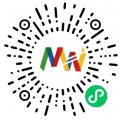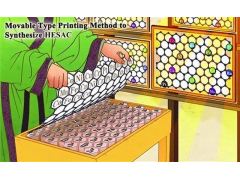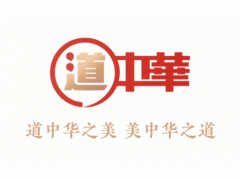 This year, "stamp-collecting tourism" has become popular, with many people "traveling tens of thousands of steps a day and collecting hundreds of stamps." In particular, color-registered seals, in which seals of different colors are superimposed one after another to form a complete picture, are sought after by people for their exquisite conception and superb skills. The history of seals can be traced back to the Shang Dynasty, and they were widely used during the Spring and Autumn Period and the Warring States Period. Books printed with color printing already appeared in the Song and Yuan Dynasties.
This year, "stamp-collecting tourism" has become popular, with many people "traveling tens of thousands of steps a day and collecting hundreds of stamps." In particular, color-registered seals, in which seals of different colors are superimposed one after another to form a complete picture, are sought after by people for their exquisite conception and superb skills. The history of seals can be traced back to the Shang Dynasty, and they were widely used during the Spring and Autumn Period and the Warring States Period. Books printed with color printing already appeared in the Song and Yuan Dynasties.
▲Dujiangyan Scenic Area Limited Color Seal. (Picture source: Qingcheng Mountain Dujiangyan official NetEase account)
Printing is one of the four great inventions in ancient my country and is known as the "Mother of Civilization". Why is typography so important? When did it originate? What technical improvements have been made? How does it affect the process of civilization? Let us review the development of printing technology in ancient China.
Before the invention of printing, how did the ancients record words?![]()
As early as the Shang Dynasty, my country had formed a relatively complete writing system. After writing is produced, knowledge can be recorded, passed on and disseminated.
In order to better record words, the ancients tried their best. Initially, characters were carved on tortoise shells, animal bones, bells, tripods, gold and stones, or written on bamboo slips, wooden tablets, sheepskin, or silk, which was time-consuming, laborious, and inconvenient to preserve.
▲Oracle bones collected by the National Museum. (Image source: Visual China)

▲The "Tianhui Medical Slips" unearthed from the Han Dynasty Tomb in Laoguanshan, Chengdu. (Photo by Zhang Lang published by China News Service)
During the Eastern Han Dynasty, Cai Lun summarized the experience of previous man-made paper and made plant fiber paper that was easy to write on. This kind of paper was easy to make and cheap, and became the main writing material.
▲Traditional papermaking. (Image source: Visual China)
The emergence of paper books broke the monopoly of knowledge by the aristocracy. However, gaining knowledge is still not easy. At this time, books were mainly copied by hand, which was time-consuming and labor-intensive, and there was also the possibility of copying mistakes and omissions. Another, more accurate and less labor-intensive method, is rubbing.
▲Rubbings of Yongzhou cliff carvings. (Image source: Visual China)
It's similar to the imprints we made when we were children when we put coins under the white paper and drew with pencils. Rubbing is to place paper on an object with words or paintings engraved on it, and tap it gently to form a concave and convex pattern on the paper. Dip the rubbing bag in ink, and tap the convex or concave marks. The concave words (paintings) will not appear. The ink is white, so that the words (paintings) will appear perfectly on the ink.
However, these two methods are still inconvenient for large-scale reproduction of books.
How did ancient Chinese printing realize "copy and paste"?![]()
According to the available information, it is impossible to determine the specific time when printing was invented. However, judging from the literature and printed objects, printing originated during the Sui and Tang Dynasties.

▲Engraving and engraving. (Image source: Visual China)
During the Sui and Tang Dynasties, with the development of social economy and culture, especially the rise of the imperial examination system, more and more people were studying, and the demand for books was growing, and woodblock printing came into being. Workers select wood with fine texture and high hardness to make flat wooden boards. They write the pictures and words to be printed on transparent and light paper. They stick the reverse side of the paper to the wooden board and use a knife to carve out the reverse, The raised texture creates an engraving. Brush ink evenly on the engraving, lay it on paper, apply even pressure and lift the paper, and you will get a positive, clear print.

▲Printed engraving of the God of Wealth New Year pictures. (Image source: Visual China)
Engraving blocks can be reused, large-scale reproduction of books can be achieved, prices are more affordable, and it is easier for people to access books and learn knowledge. The spread of knowledge has expanded, and can even transcend restrictions of class, region, and language, and education has been opened to a wider range of social classes. It can be said that printing promoted the popularization of knowledge, thereby greatly promoting the development of human culture and the progress of human civilization. The woodblock prints of the Tang Dynasty include Buddhist scriptures and statues, as well as daily calendars and copybooks. The "Diamond Sutra" of the Tang Dynasty discovered in the Dunhuang Sutra Cave is the earliest existing engraving and printing object with exquisite craftsmanship.
▲Part of the Dunhuang engraving of the Diamond Sutra is in the collection of the British Museum.
During the Five Dynasties, Kaifeng, Hangzhou, Chengdu and other places became the centers of book printing activities, and a large number of agricultural books, medical books, almanacs and calligraphy were spread throughout the country. During the Liao, Song, Xia and Jin dynasties, the woodblock printing industry entered its heyday. The printing industry spread all over the country, and printed matter such as banknotes and advertisements also appeared. In the Northern Song Dynasty, "Jiaoziwu" was set up in Yizhou and "Jiaozi" banknotes were issued. The advertising copper plate of "Jinan Liujia Kung Fu Needle Shop" now stored in the National Museum is the earliest physical "advertising" in the world.
▲The old version of Jiaozi in the Northern Song Dynasty is kept in the Liaoning Museum.

▲The copper plate of "Jinan Liujia Kungfu Needle Shop". (Picture source: National Museum of China WeChat official account)
Xixia had a Paper Industry Institute and an Engraving Department, specializing in papermaking and engraving books. The colorful woodblock printing "Nine Lights of Blazing Light" unearthed from the wooden pagoda in Yingxian County, Shanxi Province shows the high achievements of woodblock printing in the Liao Dynasty. The Jin Dynasty innovatively used silk fabrics to print coins.
▲Ningxia Museum collects Xixia woodcarving printing plates. (Image source: Visual China)
During the Song and Yuan Dynasties, woodblock printing matured and two-color and multi-color overprinting technologies were developed. The earliest extant book with two-color overprinting of red and ink is the "Comments on the Diamond Sutra" from the Yuan Dynasty. On this basis, the Ming Dynasty developed the printing process of block printing. The blocks were carved separately according to the different colors of the pattern, and the colors were overprinted sequentially from light to dark, and finally a complete color picture was formed.
▲The China Printing Museum collects the two-color overprinted version of "Cipu" in imperial red and ink from the Kangxi period of the Qing Dynasty.
The Ming Dynasty was the peak period of the development of ancient printing. The official set up a printing factory - Si Li Jingjing Factory, with more than a thousand craftsmen in plate making, printing and binding. The private printing industry spreads all over the country, printing a large number of popular reading materials such as Mandarin Chinese and novels. In the Qing Dynasty, they not only printed a large number of Manchu and Mongolian books, but also applied printing technology to New Year pictures, contracts and other fields.
▲Zhuxian Town wooden New Year picture woodblock prints and New Year picture printing scenes displayed in Kaifeng Museum (Picture source: Visual China)
The invention of woodblock printing is a major milestone in the history of world printing. However, one page of book requires one engraving plate, and one engraving plate can only engrave one book. once the engraving of a book is wrong, it is difficult to correct it, and it is also prone to moisture and decay, making it inconvenient to preserve. After continuous improvement, a more flexible printing technology appeared in the Song Dynasty. Improve, improve, improve again![]()

▲Movable type printing cultural relics collected by the National Museum of China. (Image source: Visual China)
During the Qingli period of the Northern Song Dynasty, Bi Sheng was inspired by his son's clay-making game and carved each character into a separate seal. Each seal was typeset and printed as needed. Shen Kuo, a scientist from the Song Dynasty, recorded in detail a complete set of processes for Bi Sheng's clay movable type printing in "Mengxi Bi Tan". Use clay to make a single-character seal of uniform size, burn it to harden it, then arrange the movable type into an iron mold for typesetting, brush ink, press paper, and print. After printing, remove the movable type and store it.
▲Fragmentary pages of the movable type "Buddha's Sutra on the Infinite Life" printed in the Northern Song Dynasty (around 1103). (Picture source: Wenzhou Museum WeChat official account)
Movable clay type was improved on the basis of woodblock printing, but it was not perfect. Clay movable type is troublesome to bake and difficult to preserve, and uneven coloring may occur during printing. Skilled craftsmen of later generations continued to improve technology on this basis and created wooden movable type, copper movable type, tin movable type, lead movable type, etc. Among them, wooden movable type was the most widely spread and influential.
▲The Tangut "Auspiciousness Becomes to the Kou He Ben Tan" in Tangut is the earliest movable wood type print found in the world. (Picture source: National Museum of China WeChat official account)
From 1297 to 1298, Wang Zhen, who served as the magistrate of Jingde County, Xuanzhou, designed and asked craftsmen to engrave a set of wooden movable type, and tried to print the "Jingde County Chronicle" with more than 60,000 words. Within a month, Just print hundreds of copies. In order to make it easier for typesetters to pick up type, he also invented the earliest typesetting machine - the wheel typesetting tray. The wooden movable type was arranged in a large wooden turntable according to rhyme and model. Workers turned the turntable to pick up the typesetting, saving labor and time. Wang Zhen's more well-known achievement lies in his "Nongshu", which is a collection of farming, forestry, animal husbandry, sideline and fishery techniques. He wrote his invention of wooden movable type technology and its practice into "Making Movable Type Printing Calligraphy" as an appendix to "Agricultural Book".
▲Wheel typesetting plate. (Picture source: "Agricultural Book")
In the Qing Dynasty, Qianlong ordered the compilation of the "Sikuquanshu", which was printed with wooden movable type, and more than 250,000 large and small movable types were produced. These wooden movable types were used in large-scale official book printing activities during the Qianlong and Jiajing periods. A total of 138 types of books were printed, which were combined into a series of books, the "Qinding Wuyingdian Treasure Edition". Jin Jian, who was in charge of the engraving and printing of the series of books, compiled the "Qin Dian Wuying Palace Treasure Edition Program", which recorded the printing situation in detail. This book has been translated into German, English, Japanese and other languages and has been widely circulated.
▲"Wuyingdian Collection Edition Program". (Image source: Palace Museum website)
From the invention of block printing to the popularization of movable type printing, printing technology has experienced a long-term development process. Printing technology spread to North Korea, Japan, Vietnam and other places, and to West Asia, North Africa and Europe through the Silk Road. In 1310, the Persian (now Iran) historian Rashid al-Din introduced the Chinese engraving and printing technology in his "History of the World". In 1443, Annan (now Vietnam) sent envoys to China to learn engraving and printing technology. In the mid-15th century, inspired and influenced by China's movable type printing technology, the German Johann Gutenberg used lead-tin alloy to make Latin movable type and used machinery to print the Bible. During the Renaissance, the British philosopher Bacon said in "New Instruments" that "these three inventions, printing, gunpowder and magnets, have changed the entire appearance and situation of things around the world." Joseph Needham, a well-known expert on the history of science and technology, believes that "paper has proven to be the most satisfactory writing material for expressing human thoughts, and if printing is added, a person's thoughts can spread to the public across the gap of time and space." American historian In "The Printing Press as a Power of Change: Communication and Cultural Change in Early Modern Europe", Eisenstein analyzed the important role of printing in the European Renaissance, religious reform, and scientific revolution.
▲Classic editions are a direct product of printing technology and an important carrier of Chinese civilization. The picture shows the landmark building Wenhan Pavilion of the Central Main Building of the National Library of China. (Photo by Zhao Wenyu published by China News Service)
Five thousand years of civilization history, three thousand years of publishing history, and fourteen hundred years of printing history. From handwriting, rubbing to printing, from engraving to movable type, from clay movable type, wooden movable type to the technological revolution in the field of Chinese laser phototypesetting, printing technology continues to innovate, demonstrating the enterprising spirit and spirit of the Chinese nation to be upright rather than conservative, respect the past and not be retrograde. A fearless character who is not afraid of new challenges and has the courage to accept new things.







